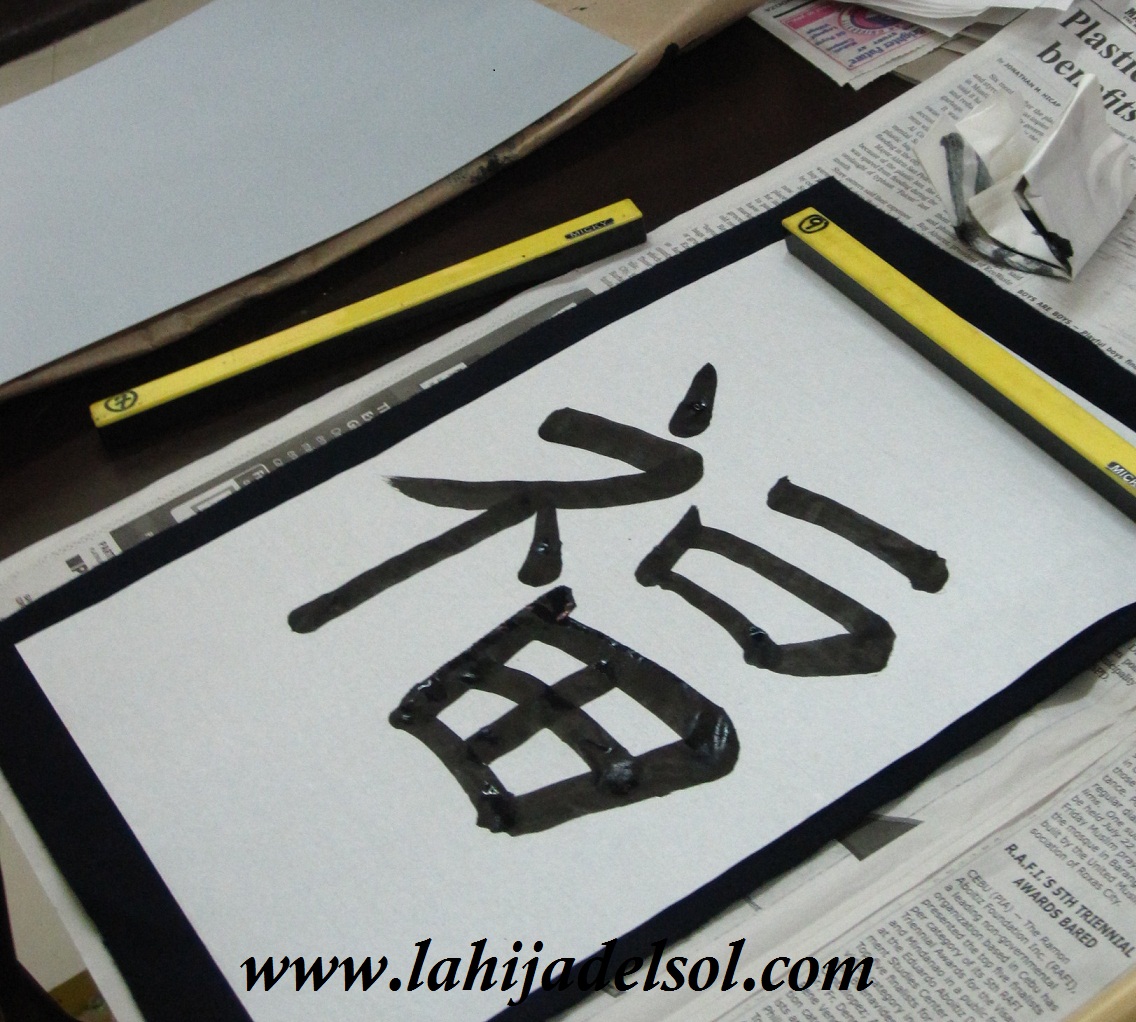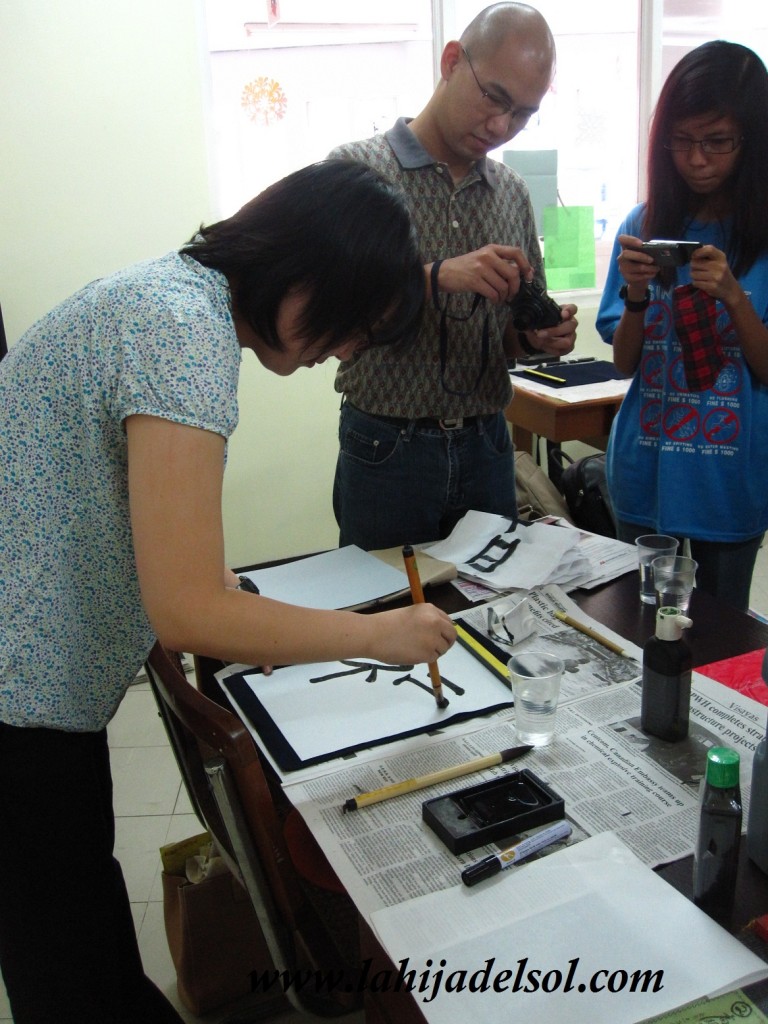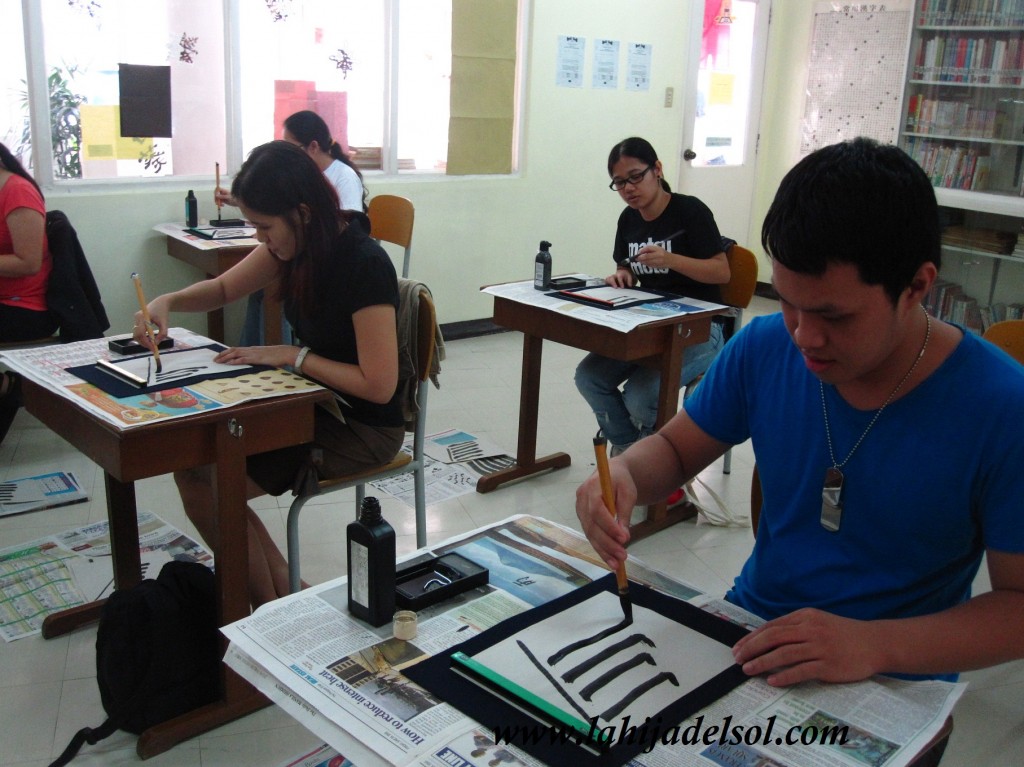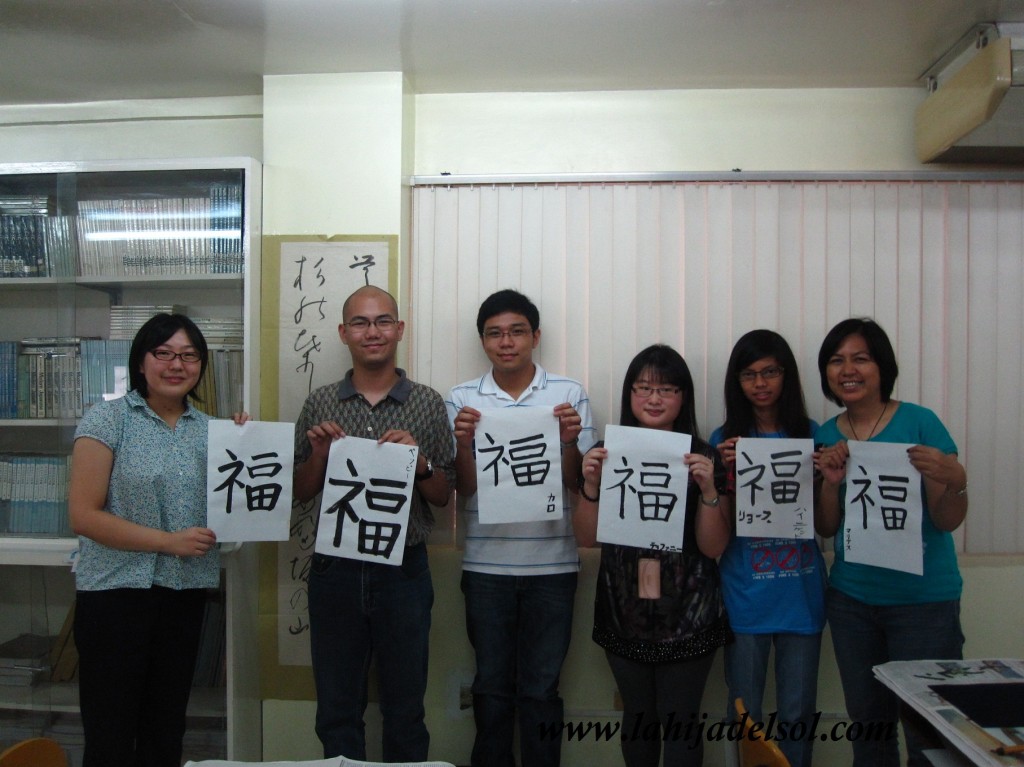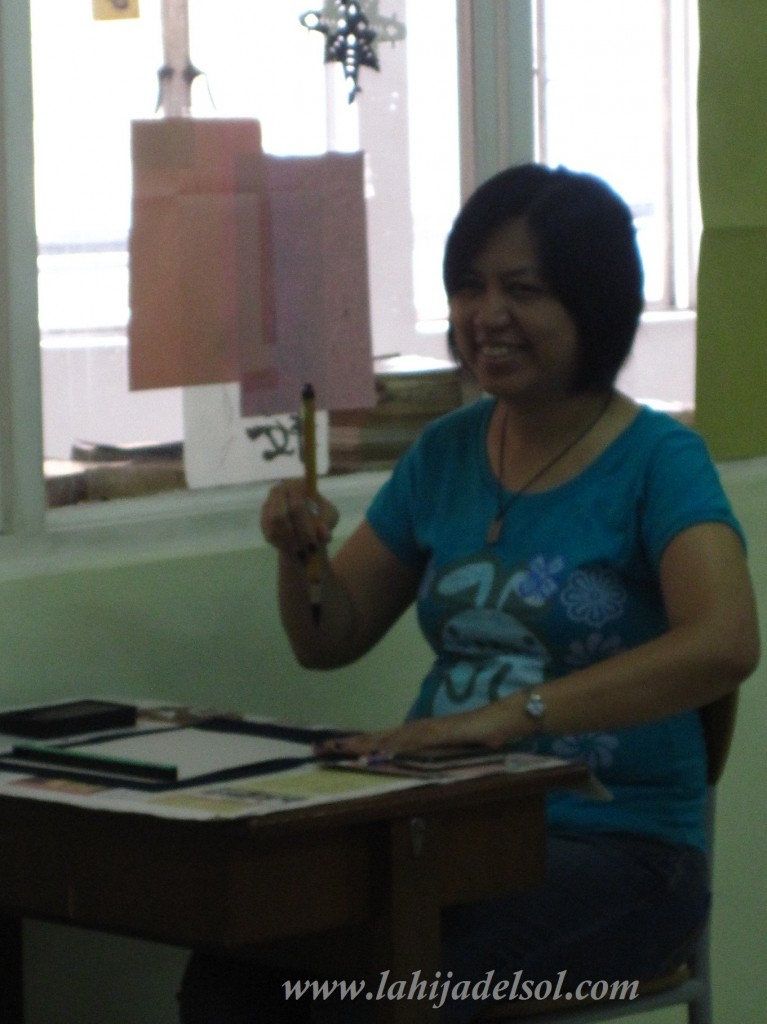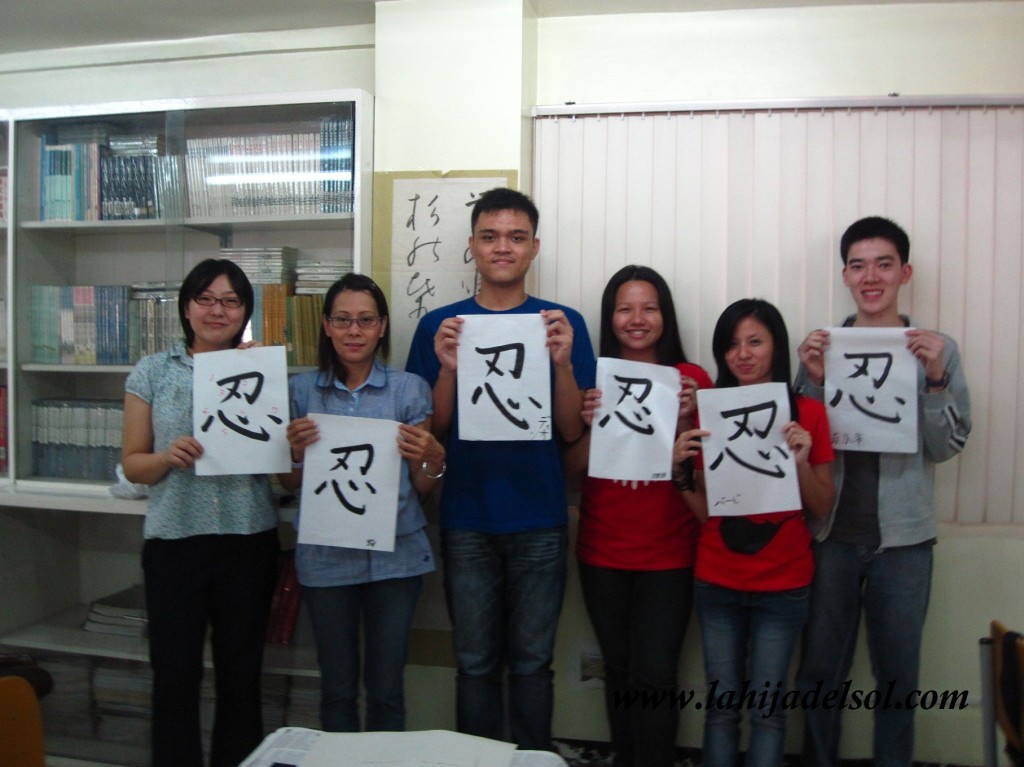When Kouchou-sensei invited me to this year’s Open House, I begged off doing the Trivia Booth. While it remains to be one of the more popular booths, I have been doing it for the past 4 years now. Also, half a day of asking shouting questions makes me hoarse for the rest of the day. And I needed to save my voice for the UST-Adamson game in the afternoon, haha.
So I got to be the assistant in the shodou (Japanese calligraphy) lessons by Suma Ayuko-sensei (of the Japan Foundation). I was so nervous because my very first shodou experience was a disaster. But Suma-sensei explained the basics so well that I felt that I could do it on my own.
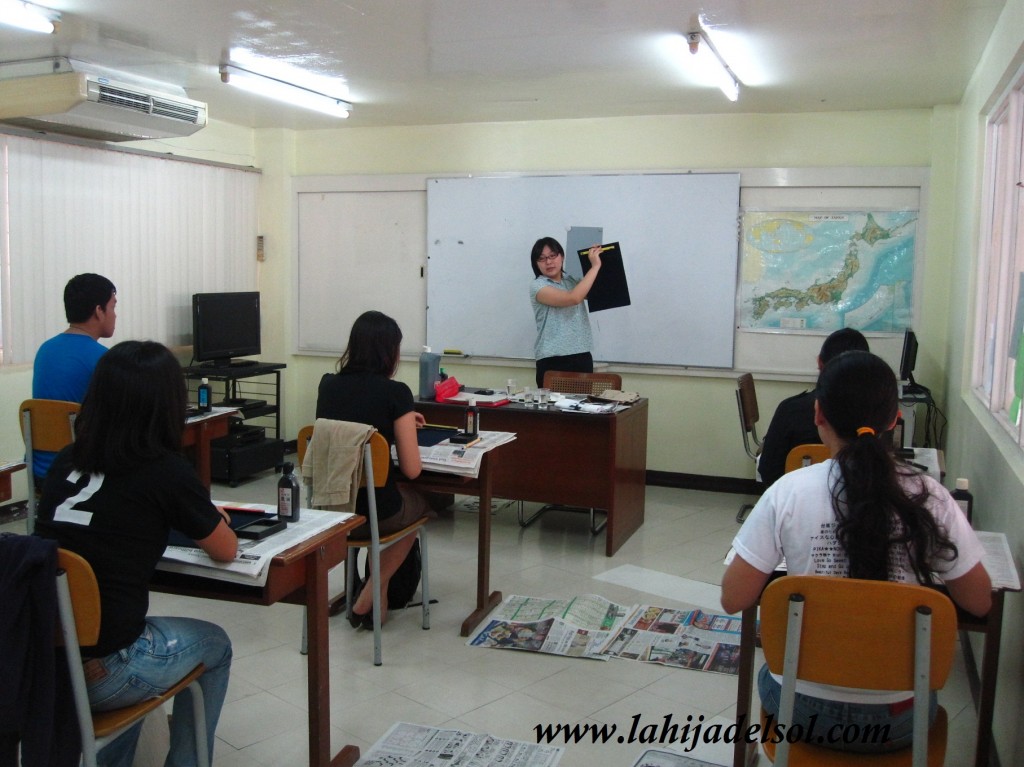
First, she explained the tools and materials used in shodou:
- Fude (brush) – A large bamboo brush is used to write the characters. A smaller/finer brush is used to write your name. Use the thumb, index finger and middle finger to hold the brush vertically.
- Shitajiki – This velvet-like cloth is placed under the paper for a smoother writing surface. Place the shitajiki directly in front of you on the table.
- Sumi and suzuri (ink/ink stone) – Ink stone is ground and mixed with water to create ink. The recess in the suzuri box is where you also pour botted ink. While traditional shodou uses ink stone, bottled calligraphy inks are widely available commercially. I bought mine at the Japanese grocery, Hatchin, for less than P150.
- Bunchin (paper weight) – This metal bar is placed on top of the paper at the topmost edge to keep it from moving as you write.
- Paper (kami) -Ordinary paper is OK for practice; I used newspaper before. But special shodou paper called hanshi is also available.
Some reminders when starting shodou:
- Hold the brush vertically using the first 3 fingers of the right hand. Suma-sensei says that in Japan, even left-handed students use the right when doing shodou.
- Place the left hand on your paper to keep it from moving. It is like the 2nd bunchin 🙂
- Keep your back straight at all times.
- Do not move your wrist. Only the arm is moving during shodou.
- Relax! Beauty will show in your writing when you are not uptight.
I remember Edwin Mojica-sensei saying before that shodou is also a form of meditation. You empty your mind of everything and concentrate on the beauty and meaning of your writing.
In connection with Zen Buddhism, Wikipedia has this to say:
Japanese calligraphy was influenced by, and influenced, Zen thought. For any particular piece of paper, the calligrapher has but one chance to create with the brush. The brush strokes cannot be corrected and even a lack of confidence will show up in the work. The calligrapher must concentrate and be fluid in execution.
Basic shodou strokes
According to Suma-sensei, there are 3 basic strokes in shodou:
- Stop – Can be done either vertically or horizontally, your stroke ends with a point
- Hook – Can be done either vertically or horizontally, this stroke begins just like the stop, but at the end, you pause then lift up the brush with a flourish, drawing a hook.
- Fade out (left) – begins the same as the stop, moving towards the left the slowly lifting the brush, creating a faded effect.
Fade our (right) – probably the most difficult stroke for me. The start is different from all the other strokes. You start out by lightly placing your brush on the paper, slowly adding force as you move to the right, then gently lifting the brush to create a faded effect.
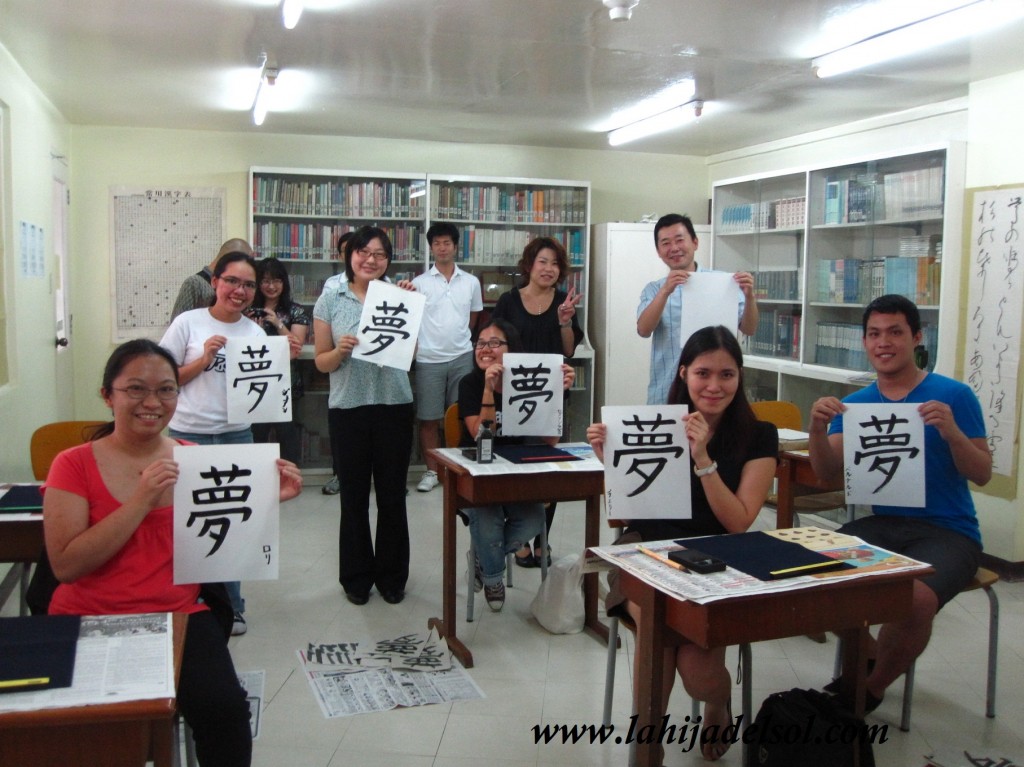
At the end of the basic lessons, the class participants chose a Kanji to write on the special shodou paper, which they can take home and display. The first session chose 夢 (yume – dream) , Tesha’s session chose 福 (fuku – good fortune) and the 3rd chose 忍 (nin – patience). Ahahaha, funny because before the classes began, I was telling Suma-sensei that my favourite Kanji is fuku because of Fukuyama Masaharu! 😀 I didn’t know what Kanji the last session chose because I had to fly-fly to Araneta after we broke for lunch.
My time at the shodou class was very fun — it was really great knowing that many Filipinos are interested in Japanese traditional culture too, not just popular ones. And they were really good at it, as these photos show! 😀
I’d like to try these out as soon as I find my brush. I only have my fude pen but it is not suitable because the head is so small. Also, I need to take my Vitamin-B complex because my hands are beginning to tremble again 😀
I will upload more NCF Open House pics as soon as I grab them from Joy-san’s FB album 😀
